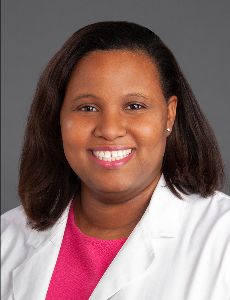[The following notes were generated by Michele Haight, PhD.]
Marquita S. Norman, MD, MBA, Assistant Dean for Student Diversity and Inclusion, Associate Professor, Wake Forest University School of Medicine
Kara L. Caruthers, MSPAS, PA-C, Assistant Program Director PA Program, Associate Professor, University of Tennessee Health Science Center
Contact Information:
m.s.norman@wakehealth.edu
kcaruthe@uthsc.edu
Surviving Club Quarantine: Establishing Mentorship and Maintaining Wellness in a Diverse Student Population
DJ D-Nice “Club Quarantine” represents a unique opportunity for bonding, shifting and pivoting in these times of difficulty and challenge.
Mentorship: Talking with You
Coaching: Talking to You
Sponsorship: Talking about You
We are using the lens of “mentor” for our case discussions.
Seven Dimensions of Wellness:
- Physical
- Emotional
- Intellectual
- Social
- Spiritual
- Environmental
- Occupational
Graduate Health Professions students are impacted in all of the dimensions of wellness, but this presentation highlights the following four dimensions:
- Emotional: possessing the ability to feel and express human emotions; achieving a sense of fulfillment in life.
- Intellectual: encourages creative, stimulating mental activities…available to expand one’s knowledge and improve skills.
- Social: builds a sense of belonging
- Occupational: preparing and making use of your gifts, skills and talents in order to gain purpose, happiness and enrichment in your life.
We must be especially mindful of these wellness dimensions and how they are manifested in our students during their training.
We must bear in mind that we are still in a pandemic and our students have limited ways in which they are able to interact with one another.
Key Considerations from Case Discussions:
- What role-modeling experiences do students have for the culture and environment of higher education?
- What are some of the challenges and stressors of Graduate Health Professions education?
- Imposter Syndrome is prevalent among women and people of color.
- What are the institutional policies for students to be able to work during their training?
- Does the institution have emergency grant funding?
- What resources are available to ensure that students are psychologically safe throughout their training?
- What are the institutional policies and procedures that address issues of microaggressions, faculty-student power dynamics, mistreatment concerns and the impact of COVID-19 on vulnerable populations?
- It is important to remember that there are so many ways that students can feel troubled during their training and to be able recognize how that affects their training.
Additional Considerations
- Partnered students
- Parents of schoolchildren,
- Veterans,
- High-risk populations with chronic diseases.
If students do not have a solid educational foundation in K-12 and undergraduate education, then they bring all of these experiences with them to the graduate Health Professions workspace.
Coordinated Health Workforce Pathway K-12
- Pre training: How do students choose the Health Professions? How do students get into the Health Professions?
- Training: How are students retained? How do students overcome certain challenges?
- Workforce: How have students been prepared to transition to the workforce and address workforce-related issues?
We must hold ourselves accountable and ensure our students are well by practicing
Cultural humility and Cultural Responsiveness throughout their training.
Current Graduate Health Professions Students’ Demographics have changed:
- Increase in number of first generation students
- Increased ethnic diversity
- Wider Age Range
- Income differences
Across the Health Professions, accrediting bodies and professional organizations have adopted a strong focus on student diversity and wellness.
The pandemic has caused an increase in depression and imposter syndrome in Graduate Health Professions students.
Resources to address issues of diversity, equity and inclusion:
Wake Forest:
- Open, drop in, biweekly group for to support the mental health needs of women of color, led by a woman of color.
- Mindfulness Book Club, a-racial justice-focused for faculty, students and staff.
- Common Ground, a monthly safe space to discuss common issues and values.
- Affinity Groups (Wake Forest Health System)
- SNMA Movie Night.
- Continuous Quality Improvement (CQI) approach through the development of a Racial Diversity Task Force at the institutional (Wake Forest Health System) and local (Student Affairs) levels.
UTHSC:
- Zoom “Uncomfortable Conversations Series” (students, faculty and staff)
- PA Program Book Club*
- CARES Team /send concern to CARES team who is struggling
- Campus-wide Food Pantry
- QEP project on the social determinants of health
Diversity Equity and Inclusion Initiatives must address racism as a root cause.
We need to do the work at the institutional level to develop:
- Sustainable programs vs. performative gestures.
- Systemic review and adaptation to include:
- Admissions
- Curriculum
- Clinical training
- Remediation and Retention
We cannot return to “normal,” because “normal” was not working.
*Book Club Book List:
Black Man in a White Coat, Dr Damon Tweedy
The Political Determinants of Health, Daniel Dawes, JD
Redefining Realness, Janet Mock
The Spirit Catches You and You Fall Down, Anne Fadiman






